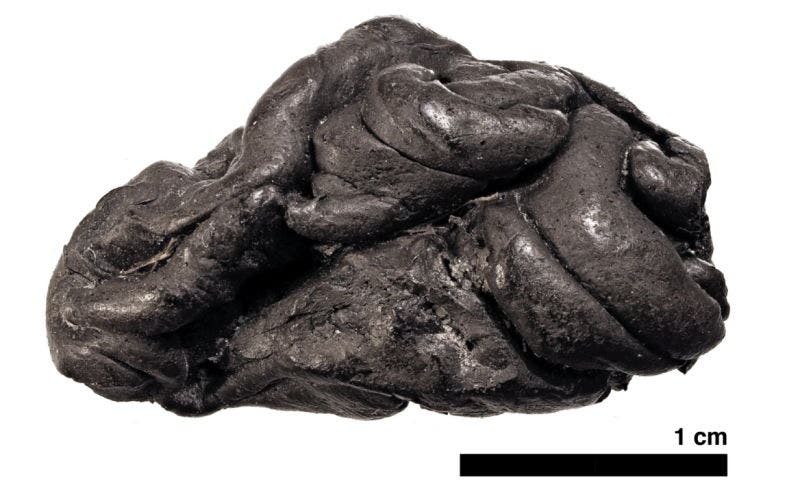
While agriculture was spreading through many parts of Europe, communities of hunter-gatherers in Denmark still practiced their ancient lifestyles. This is what the life of “Lola”, a Neolithic Dane with dark skin, blue eyes, and dark hair, seems to suggest. Remarkably, information about Lola’s appearance, diet, lifestyle, and even medical history was not extracted from her remains — those were never found — but rather from a perfectly preserved 5,700-year-old “chewing gum”.
The ancient chewing gum is actually a piece of birch tar, a sticky substance that was primarily employed as a glue by Middle Pleistocene communities. However, early humans likely used the birch tar for other purposes. People would likely chew on the birch to give it malleability prior to employing the substance in tool manufacturing. They might have also chewed it for medical purposes, to soothe toothaches, suppress hunger, or simply because they liked the feeling as modern humans use chewing gum.

This particular piece of birch tar, which was recovered from a site in southern Denmark, was found sealed in mud. The substance was already primed for preservation thanks to its hydrophobic (water-repellant) properties, but the local environment helped protect the chewed substance from the elements.
“Almost everything is sealed in mud, which means that the preservation of organic remains is absolutely phenomenal,” said Tehis Jensen, co-author of the new study.
The pristine preservation of the sample allowed researchers at the University of Copenhagen to sequence the full genome of the person who last chewed on it. Not only that, they also extracted genetic information about the oral bacteria that inhabited Lola’s mouth, as well as information about her diet.
“It is the first time that an entire ancient human genome has been extracted from anything other than human bones,” Hannes Schroeder of the University of Copenhagen, told AFP.
Although her age could not be determined, the excellently preserved genome showed that the Neolithic female had dark hair, dark skin, and blue eyes.
These features were common among foragers in continental Europe. In fact, the genome traces Lola’s lineage to mainland Europe and not central Scandinavia. And, since remains on the ancient chewing gum contain duck and hazelnuts, Lola was likely a forager, too, despite the fact she lived during the Early Neolithic when agriculture was already established around Europe, particularly south of the Danube.
Lola was also lactose intolerant, fitting the narrative that lactase persistence only appeared in adults fairly recently after the introduction of dairy farming. This shows that the region where the birch was found may have been quite late in adopting agriculture.
The birch pitch also contained microbial DNA. Most of these organisms were harmless, but the researchers also identified a bacterium linked to gum disease, as well as DNA associated with pneumonia and a virus that causes mononucleosis (glandular fever).
All of these insights were gleaned from an unsuspecting piece of very old gum. Sounds like a good day for science!
The findings appeared in the journal Nature Communications.



